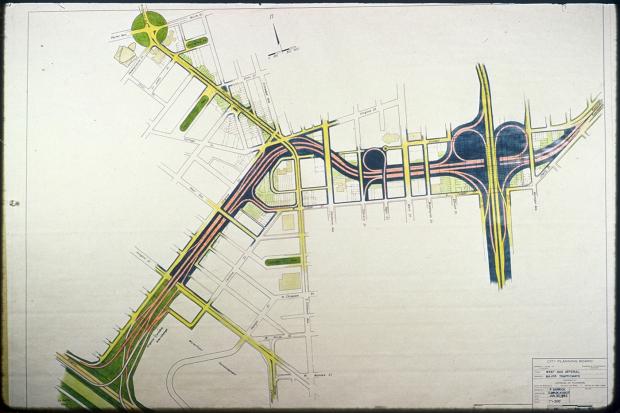Looking Backward: West Side Arterial, 1962
It is commonly asserted that Buffalo’s plans collect dust on shelves, but let’s count our blessings. As late as 1976, the New York State Department of Transportation had plans to construct the West Side Arterial, a submerged highway that would have connected the Kensington Expressway to the I-190 through Allentown and the Lower West Side.
As this 1962 dust-covered plan shows, the West Side Arterial would have carved a 1.6-mile path of destruction across 20 blocks, forming the northern section of a proposed, but only partially built, inner loop of downtown expressways. Richmond Avenue would have been extended across Wadsworth, Allen, College, and Mariner streets as an expressway feeder. The arterial’s first phase—the Virginia/Carolina interchange, which consumed five blocks of the Lower West Side—was built. But by 1972, even state transportation planner Robert Breuer reflected, “It may be that the people don’t want or need an expressway.” Delaware District Councilman William B. Hoyt, supporting rapid transit in lieu of more highways, suggested that “simply exposing the plan to public hearings would bring it to its knees.” The plan was indeed weighed down by protest from West Side residents, notably Frankie Perez and Jose Pizzaro of the Puerto Rican-Chicano Coordinating Committee. As assemblyman, Hoyt secured passage of the legislation that ultimately killed the West Side Arterial on January 12, 1976.
Had the West Side Arterial been constructed, today tens of thousands of vehicles would be traveling along it daily, and the New York State Department of Transportation would be laughing off notions that Buffalo could ever function without it. It has functioned just fine.

